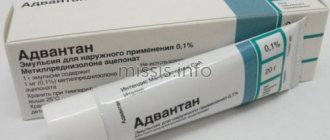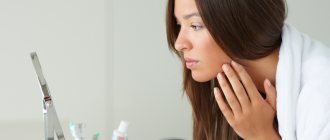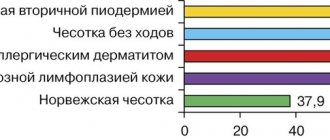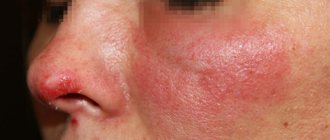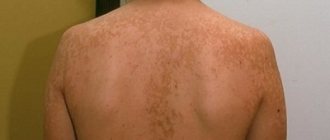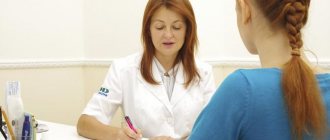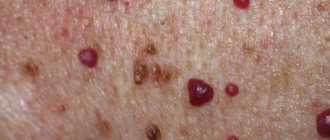General rules
The term "lichen" brings together dermatoses that are caused by fungi, viruses or other microorganisms.
Many dermatoses are recurrent in nature, appearing periodically. Their pathogenesis is based on gastrointestinal pathology, metabolic disorders, decreased body reactivity and susceptibility to infectious diseases. Reduced defenses and stress create favorable conditions for infection by fungi and viruses. In some diseases, the allergic factor also plays a certain role. In this regard, in case of these diseases, adjustments to the diet are necessarily made and its main points can be highlighted:
- Maintaining a balanced diet. Food must contain the required amount of proteins, carbohydrates, fats, microelements and vitamins , which has a beneficial effect on the immune system . Among protein foods, preference is given to lean meat, fish (if not contraindicated) and dairy products. It is desirable to have a predominance of vegetable fats over animal fats in the diet, since they contain vitamins A and E , which increase the body's resistance and weaken allergic manifestations. Carbohydrates should be replenished primarily through the consumption of complex carbohydrates (cereals, vegetables, fruits, bran, whole grain bread).
- The diet should be gentle on the liver, which includes the exclusion of smoked, salty, spicy and fried foods, spices and seasonings, as well as canned food and extractive substances (meat, fish and mushroom broths). If pathology of the liver and biliary tract is detected, additional treatment must be carried out.
- Be sure to introduce fermented milk products with bifidobacteria , which restore normal flora, and this has a beneficial effect on the immune system.
- Food must be natural, freshly prepared and free of preservatives, flavorings and flavor enhancers.
- If the patient has constipation , restoration of normal intestinal function, as well as elimination of flatulence .
- For all diseases, drinking alcohol (including beer) is prohibited, primarily because it adversely affects liver function and aggravates the course of skin diseases.
Nutrition for different types of skin lesions has some features, which are discussed below.
Diet for pityriasis rosea
Zhiber's pityriasis rosea is classified as a dermatoses of infectious-allergic or viral origin, but the exact cause is not clear. At first it appears as one pink maternal spot, the core of which turns yellow and peels off over time. After a few days, small itchy spots appear all over the body. Among the causes that provoke the disease are hypothermia, nervous stress, decreased immunity, previous infectious diseases, intestinal disorders and metabolic disorders.
For Zhiber rosea, a hypoallergenic diet is prescribed, which excludes:
- fish, seafood, fish caviar;
- milk and cheeses;
- brightly colored fruits (red apples, strawberries, raspberries, blueberries, melons, strawberries, cherries, grapes, persimmons, pomegranates, plums) as well as citrus fruits, pineapples and melons;
- red vegetables (tomatoes, carrots, beets, red peppers, eggplants, red cabbage);
- eggs;
- products containing flavors, dyes, preservatives;
- honey;
- nuts;
- chocolate, coffee and cocoa;
- alcoholic drinks;
- smoked meats, pickled and canned products;
- spices, seasonings, sauces;
- fruit waters and juices with preservatives.
Limit use:
- buckwheat, corn and wheat cereals;
- pork, lamb, turkey, rabbit;
- potatoes and legumes;
- herbal decoctions.
Recommended:
- natural fermented milk products without additives or dyes;
- iron-fortified baby food;
- lean meat, chicken;
- pearl barley, rice, oatmeal and semolina;
- tongue, liver, kidneys;
- rice and oatmeal bread;
- greens and green vegetables: white cabbage, broccoli, cucumbers, cauliflower and Brussels sprouts, green salad, dill, parsley, zucchini, rutabaga, squash, turnips;
- light-colored fruits: white currants, apples, gooseberries, pears, dried apples, white cherries;
- butter, sunflower, olive;
- weak tea, compotes, rosehip decoction;
- still mineral water.
The diet is predominantly dairy-vegetable and must be followed for up to 3 weeks for adults, and for children for up to 10 days.
Diet for shingles
Shingles is caused by the Herpes zoster virus, which in this disease affects the nerve endings. It is characterized by malaise, headache , skin inflammation, rashes and pain in the area of the affected nerve - usually in the chest area. Inflammation and pain subside over time, the bubbles with contents decrease and peel off, but pain along the affected nerve can persist for several months. The disease develops against the background of overwork, stress, decreased immunity, cancer and bone marrow transplantation.
With herpes zoster, especially recurrent ones, attention should be paid to nutrition. Since the persistent course of the disease is facilitated by decreased immunity and hypovitaminosis , the diet should be complete and balanced.
- Contain a sufficient amount of complete proteins (cottage cheese, dairy products, meat, fish). Preference should be given to lean meat and fish, which are best boiled or baked. The most valuable fish as an additional source of omega 3 acids are mackerel, herring, tuna, salmon, halibut.
- It is necessary to enrich the diet with vitamin B (sprouted cereals, brown rice, whole grain products, brewer's yeast, soybeans, pistachios, peanuts, broccoli, green leafy vegetables, nuts, seeds, buckwheat, millet, lentils, oatmeal and barley, corn, liver, beef, fish, eggs, pumpkin seeds, brown rice, beans).
- B vitamins increase the body's resistance and improve metabolic processes.
- Introduce vitamin A (cod and halibut oil, fish oil, cod liver, animal liver).
- It is necessary to eat foods containing vitamin C , which is an antioxidant (citrus fruits, strawberries, melon, leafy green salads, Brussels sprouts, broccoli, black currants, bell peppers, strawberries, rose hips, apples, tomatoes, apricots, peaches, persimmons).
- The diet should contain the antioxidant vitamin E , which a person can get by consuming vegetable oils, all types of nuts, oatmeal and buckwheat.
- It is necessary to daily consume fermented milk products with bifidobacteria , which help normalize the intestinal microflora and indirectly increase immunity and resistance to infections.
- All cereals are allowed, but buckwheat and oatmeal are preferred, as well as all vegetables and fruits as sources of vitamins and microelements.
In order to reduce the load on the liver, it is worth excluding fried and spicy foods, strong broths, pickled vegetables, smoked foods, coffee and limiting animal fats. Avoid alcohol completely. The diet must be followed for several months.
Diet for lichen planus
Lichen planus is a chronic disease that affects the skin, mucous membranes and sometimes nails. Polygonal plaques of pink color with a lilac tint have a characteristic localization: wrist joints, anterior surface of the leg, sacrum, oral and genital mucosa. The causes of the disease include: hereditary predisposition, infection, exposure to chemicals and drugs, stress.
There are cases of complete recovery of the patient without treatment and in the absence of symptoms, treatment is not carried out. There are cases when relapses occur over several years, the number of rashes increases, and they are accompanied by severe itching. A distinctive feature of this dermatosis is its frequent combination with gastrointestinal diseases ( gastritis , peptic ulcer , cirrhosis of the liver ) and diabetes mellitus . Therefore, with lichen planus, dietary nutrition is of great importance, which is so necessary for all diseases of the gastrointestinal tract.
Long-term inflammation impairs the immune system, which contributes to the progression of the disease and the spread of the process. It turns out to be a vicious circle, which can be interrupted by restoring the immune system, and proper nutrition plays an important role in this. There is no special diet that can cure this disease, but taking into account all of the above, dietary nutrition should include the following:
- If there is itching and severe inflammation during an exacerbation, avoid spicy, smoked, salty, fried foods, canned and extracted foods.
- It is prohibited to consume chocolate, honey, milk, eggs, chicken and poultry meat, citrus fruits, coffee, cocoa, sweets, exotic fruits and seafood, products with preservatives and dyes, as they are strong allergens.
- Inclusion in the diet of vegetables and fruits of dull color, fiber and bran. Dietary fiber has the ability to absorb under-oxidized metabolic products in the intestine and remove them, enhancing intestinal motility.
- Regulating stool and combating flatulence , which is achieved by eating bran, prunes, apples and limiting the diet of legumes.
- Refusal of alcohol and colored drinks, juices with preservatives are also prohibited.
- Vitamins E , A , group B and nicotinic acid are used in the treatment of this disease and must be supplied with food. Vitamin A affects the division of skin cells and reduces the severity of inflammation. It can be obtained by eating fish oil, halibut, cod liver, beef and pork liver.
- Nicotinic acid is found in baked potatoes, liver, beef, turkey, asparagus, kale, broccoli, celery, bulgur, oatmeal, sprouted barley, and wild rice.
- Sources of vitamin E include wheat germ oil, cottonseed oil, corn oil, flaxseed oil, soybean oil and sunflower oil.
- B vitamins can be replenished by eating green peas, potatoes, meat, fish, legumes, cabbage, whole grains, whole grain bread, sprouted wheat, buckwheat, carrot and turnip tops, brewer's yeast, and green salads.
With pityriasis versicolor or “multi-colored,” the causative agent of which is the fungus Pityrosporum ovale, scaly spots of different colors appear (white, red-brown, dark brown). The pathogen is transmitted from the patient through things and through direct contact with the patient.
The appearance of this type of dermatosis is promoted by hormonal imbalance ( diabetes mellitus , Cushing's syndrome , pregnancy ), cancer and tuberculosis . Nutrition should pursue the following goals: increasing immunity and body resistance, normalizing metabolism (especially in the presence of diabetes).
- The diet should contain a sufficient amount of calories (their number decreases with diabetes and increased weight).
- Excluding simple carbohydrates from the diet (if you have diabetes) or significantly limiting them.
- Sources of protein should be chicken, legumes, turkey, eggs, dairy products, cottage cheese. Of all animal proteins, milk protein is easily digestible, so you need to give preference to it and it is better to consume low-fat dairy products (not higher than 0.5-1%).
- Including sufficient amounts of vegetables and fruits, algae and fiber (bran, nuts, whole grains, peanuts, beans, lentils, raisins, prunes). Seaweed is a source of minerals, trace elements and fiber.
- Consumption of vegetable oils as a source of omega 3 polyunsaturated fatty acids (soybean, flaxseed, walnut, wheat germ, olive).
- It is necessary to consume foods containing vitamin C, which increases the body's resistance to infections (black currants, bell peppers, citrus fruits, leafy green salads, strawberries, melon, Brussels sprouts, broccoli, strawberries, rose hips, apples, tomatoes, apricots, peaches, persimmons).
- B vitamins, which increase resistance to infections and are necessary for normalizing metabolism. You need to eat all types of nuts, brewer's yeast, buckwheat and millet cereals, lentils, corn, liver, beef, fish, eggs, sunflower and pumpkin seeds, brown rice, beans.
- It is necessary to have vitamin E in the diet (vegetable oils, almonds, hazelnuts, peanuts, oatmeal and barley, rose hips, prunes) and vitamin D (fish oil, fish and eggs).
- It is important to drink up to 1.5 liters of liquid (mineral water, juices, compotes and herbal teas).
Why is lichen dangerous?
The harm that lichen can cause to health depends on its type. Pityriasis rosea always occurs without complications. The prognosis of the disease is favorable for ability to work and health.
Shingles is more dangerous. It can lead to:
- decreased motor activity in the limbs;
- partial loss of sensation in the limbs;
- inflammation of the membranes of the spinal cord/brain (encephalitis, meningitis);
- viral damage to the lungs and liver;
- the addition of a secondary infection;
- inflammation of the cornea, eyeball, loss of vision.
The most common consequence of shingles is postherpetic neuralgia. This disease develops after an illness and is manifested by severe pain. Only after a few months the pain goes away.
Pityriasis versicolor and ringworm can lead to a secondary infection. This makes the treatment process more complicated and requires the use of broad-spectrum antibiotics. Trichophytosis can also lead to the formation of bald patches that will last a lifetime.
Complications of lichen planus include:
- addition of bacterial infections;
- inflammation of the oral mucosa.
Authorized Products
- Bran bread, whole grain bread, bran bread.
- It is advisable to cook soups in vegetable broth with the addition of cereals and permitted vegetables. During an exacerbation, meat and fish broths should be excluded or secondary broth should be used.
- Second courses are prepared from veal, beef, chicken or turkey (meat according to permission and individual tolerance). They are prepared in pieces, boiled or baked. It is also better to bake minced meat products using a minimum amount of vegetable oil.
- Any fish is allowed (dietary and fatty - mackerel, cod, salmon, herring), if its consumption is approved by a doctor and it does not cause allergies. The fish is stewed, boiled or baked. If tolerated well, fish should be present in the diet daily, replacing meat.
- Any vegetables and herbs (as tolerated) up to 600 g per day. For some diseases, certain vegetables are excluded, but the list of them is sufficient to diversify the diet. Considering that the vitamin value of fresh vegetables is greater, most of them are consumed fresh with vegetable oils. Out-of-season greenhouse vegetables should be excluded or limited.
- Include allowed fruits in the menu daily (up to 500 g). Give preference to locally grown fruits.
- Eat foods high in dietary fiber: bran, prunes, gooseberries, dates, figs, raisins and dried apricots, unless they are prohibited due to your illness.
- Chicken eggs and quail eggs - boiled; they are excluded if you are allergic to chicken protein.
- Low-fat dairy products and cottage cheese. Give preference to natural kefir and yogurt with bifidobacteria (dyes and preservatives).
- All grains are allowed, but preference should be given to whole grains rather than processed flakes. Moreover, it is not permissible to consume instant porridges with preservatives and artificial flavor substitutes.
- Pasta products are allowed from durum wheat.
- Include vegetable oils, using them in prepared dishes and alternating.
- The preferred drinks are weak tea with milk, green tea, herbal infusions (in the absence of allergies to herbs), compotes, natural juices, and rosehip infusion.
Table of permitted products
| Proteins, g | Fats, g | Carbohydrates, g | Calories, kcal | |
Vegetables and greens | ||||
| zucchini | 0,6 | 0,3 | 4,6 | 24 |
| cabbage | 1,8 | 0,1 | 4,7 | 27 |
| Brussels sprouts | 4,8 | 0,0 | 8,0 | 43 |
| cauliflower | 2,5 | 0,3 | 5,4 | 30 |
| potato | 2,0 | 0,4 | 18,1 | 80 |
| cucumbers | 0,8 | 0,1 | 2,8 | 15 |
| salad pepper | 1,3 | 0,0 | 5,3 | 27 |
| salad | 1,2 | 0,3 | 1,3 | 12 |
| soybeans | 34,9 | 17,3 | 17,3 | 381 |
| soybeans (sprouts) | 13,1 | 6,7 | 9,6 | 141 |
| pumpkin | 1,3 | 0,3 | 7,7 | 28 |
Fruits | ||||
| watermelon | 0,6 | 0,1 | 5,8 | 25 |
| pears | 0,4 | 0,3 | 10,9 | 42 |
| apples | 0,4 | 0,4 | 9,8 | 47 |
Nuts and dried fruits | ||||
| raisin | 2,9 | 0,6 | 66,0 | 264 |
| dried apricots | 5,2 | 0,3 | 51,0 | 215 |
| prunes | 2,3 | 0,7 | 57,5 | 231 |
Cereals and porridges | ||||
| buckwheat (kernel) | 12,6 | 3,3 | 62,1 | 313 |
| cereals | 11,9 | 7,2 | 69,3 | 366 |
| Wheat groats | 11,5 | 1,3 | 62,0 | 316 |
| brown rice | 7,4 | 1,8 | 72,9 | 337 |
Raw materials and seasonings | ||||
| milk sauce | 2,0 | 7,1 | 5,2 | 84 |
| sour cream sauce | 1,9 | 5,7 | 5,2 | 78 |
Dairy | ||||
| kefir | 3,4 | 2,0 | 4,7 | 51 |
| sour cream | 2,8 | 20,0 | 3,2 | 206 |
| curdled milk | 2,9 | 2,5 | 4,1 | 53 |
Cheeses and cottage cheese | ||||
| cottage cheese | 17,2 | 5,0 | 1,8 | 121 |
Meat products | ||||
| beef | 18,9 | 19,4 | 0,0 | 187 |
| veal | 19,7 | 1,2 | 0,0 | 90 |
| rabbit | 21,0 | 8,0 | 0,0 | 156 |
Bird | ||||
| chicken | 16,0 | 14,0 | 0,0 | 190 |
| turkey | 19,2 | 0,7 | 0,0 | 84 |
Oils and fats | ||||
| peasant unsalted butter | 1,0 | 72,5 | 1,4 | 662 |
| wheat germ oil | 0,0 | 100,0 | 0,0 | 884 |
| linseed oil | 0,0 | 99,8 | 0,0 | 898 |
| olive oil | 0,0 | 99,8 | 0,0 | 898 |
Non-alcoholic drinks | ||||
| mineral water | 0,0 | 0,0 | 0,0 | — |
| green tea | 0,0 | 0,0 | 0,0 | — |
Juices and compotes | ||||
| juice | 0,3 | 0,1 | 9,2 | 40 |
| jelly | 0,2 | 0,0 | 16,7 | 68 |
| rose hip juice | 0,1 | 0,0 | 17,6 | 70 |
| * data is per 100 g of product | ||||
Dietary recipes
Nutrition for herpes zoster, fungal lichen, pink, red and pityriasis versicolor should be easily digestible. Soups are prepared in weak meat (boil beef or poultry and change the water after boiling) or vegetable broth with the addition of cereals. This dish, combined with whole grain porridge and salad, is an excellent lunch option.
As a dessert or fresh salads (in the absence of allergies) it is allowed to supplement with a small amount of honey. It is better to refrain from spicy dressings in the form of mustard, ground pepper, and vinegar. It is preferable to steam meat and fish or bake them in foil with vegetables.
Baked fish with vegetables
Ingredients:
- 500 g flounder fillet (or cod, carp, carp);
- 2-3 sprigs of parsley and dill;
- young carrots;
- medium-sized onion;
- a quarter teaspoon of a mixture of dry ground black pepper, thyme and oregano;
- vegetable oil for lubrication;
- salt to taste.
Cooking method:
- Line a medium-sized baking dish with foil.
- Divide the fish fillet into the required number of servings and place on foil squares.
- To each serving of fish, add finely chopped onions and carrots cut into thin long strips (can be chopped on a special grater).
- Sprinkle the fish with vegetable oil (olive or sunflower), salt and sprinkle with spices.
- Roll the foil squares with fish into envelopes or tubes and pinch the edges tightly.
- Bake the fish in a well-heated oven for 35-40 minutes at a temperature of 180-200 degrees. Check readiness and, if necessary, leave in the oven for another 5-7 minutes.
- Serve baked salmon with vegetables with natural yogurt, fresh parsley and dill and cucumber.
Diet soup with meatballs
Ingredients:
- 100 g minced beef;
- 50 g ground turkey;
- medium-sized onion;
- half a bunch of parsley;
- salt and ground black pepper to taste;
- a quarter of one piece each of carrots and white turnips;
- 3-4 green onions.
Cooking method:
- Mix the two types of minced meat thoroughly.
- Peel the onion and divide into two halves. Chop the first very finely and add to the minced meat, cut the second into thin rings.
- Cut the carrots and turnips into small cubes and cook over moderate heat.
- After boiling, add onion rings, salt and pepper the soup.
- Chop the parsley very finely and add half to the minced meat.
- Form small balls from the minced meat. Add to the soup and continue to simmer over low heat.
- Add the remaining parsley and finely chopped green onions to the finished soup.
- Serve with freshly prepared croutons.
Fully or partially limited products
- For almost all skin diseases, highly extractive dishes (broths) are excluded.
- Fatty types of meat and poultry, and for some diseases, red meat and chicken.
- Fried foods, smoked meats, pickled vegetables, canned food (meat and fish), sausages, any semi-finished products (due to the content of preservatives). Sausages, sausages, ham, pates also contain preservatives and dyes.
- For all skin diseases, during the period of exacerbation, simple carbohydrates (sugar, sweets, jam, cakes, jams, sweet pastries, confectionery with cream) are excluded.
- Strong tea, coffee, cocoa.
- The use of hot sauces (vinegar, ketchup, mayonnaise), spices and alcohol is prohibited.
- If tolerance is poor, you should limit legumes and mushrooms, as foods that are difficult to digest and cause flatulence.
Table of prohibited products
| Proteins, g | Fats, g | Carbohydrates, g | Calories, kcal | |
Vegetables and greens | ||||
| vegetables legumes | 9,1 | 1,6 | 27,0 | 168 |
| canned vegetables | 1,5 | 0,2 | 5,5 | 30 |
| eggplant | 1,2 | 0,1 | 4,5 | 24 |
| carrot | 1,3 | 0,1 | 6,9 | 32 |
| pickled cucumbers | 2,8 | 0,0 | 1,3 | 16 |
| radish | 1,2 | 0,1 | 3,4 | 19 |
| white radish | 1,4 | 0,0 | 4,1 | 21 |
| beet | 1,5 | 0,1 | 8,8 | 40 |
| tomatoes | 0,6 | 0,2 | 4,2 | 20 |
| pickled tomatoes | 1,7 | 0,2 | 1,8 | 15 |
| horseradish | 3,2 | 0,4 | 10,5 | 56 |
Fruits | ||||
| apricots | 0,9 | 0,1 | 10,8 | 41 |
| pineapples | 0,4 | 0,2 | 10,6 | 49 |
| oranges | 0,9 | 0,2 | 8,1 | 36 |
| pomegranate | 0,9 | 0,0 | 13,9 | 52 |
| grapefruit | 0,7 | 0,2 | 6,5 | 29 |
| melon | 0,6 | 0,3 | 7,4 | 33 |
| lemons | 0,9 | 0,1 | 3,0 | 16 |
| nectarine | 0,9 | 0,2 | 11,8 | 48 |
| peaches | 0,9 | 0,1 | 11,3 | 46 |
| persimmon | 0,5 | 0,3 | 15,3 | 66 |
Berries | ||||
| blackberry | 2,0 | 0,0 | 6,4 | 31 |
| strawberry | 0,8 | 0,4 | 7,5 | 41 |
| raspberries | 0,8 | 0,5 | 8,3 | 46 |
| sea buckthorn | 1,2 | 5,4 | 5,7 | 82 |
| black currant | 1,0 | 0,4 | 7,3 | 44 |
Nuts and dried fruits | ||||
| nuts | 15,0 | 40,0 | 20,0 | 500 |
Bakery products | ||||
| wheat bread | 8,1 | 1,0 | 48,8 | 242 |
Confectionery | ||||
| pastry cream | 0,2 | 26,0 | 16,5 | 300 |
| cake | 3,8 | 22,6 | 47,0 | 397 |
| shortbread dough | 6,5 | 21,6 | 49,9 | 403 |
Cakes | ||||
| cake | 4,4 | 23,4 | 45,2 | 407 |
Chocolate | ||||
| chocolate | 5,4 | 35,3 | 56,5 | 544 |
Raw materials and seasonings | ||||
| mustard | 5,7 | 6,4 | 22,0 | 162 |
| ketchup | 1,8 | 1,0 | 22,2 | 93 |
| mayonnaise | 2,4 | 67,0 | 3,9 | 627 |
| honey | 0,8 | 0,0 | 81,5 | 329 |
| ground black pepper | 10,4 | 3,3 | 38,7 | 251 |
| chilli | 2,0 | 0,2 | 9,5 | 40 |
Meat products | ||||
| pork | 16,0 | 21,6 | 0,0 | 259 |
| pork liver | 18,8 | 3,6 | 0,0 | 108 |
| beef liver | 17,4 | 3,1 | 0,0 | 98 |
Sausages | ||||
| dry-cured sausage | 24,1 | 38,3 | 1,0 | 455 |
Bird | ||||
| smoked chicken | 27,5 | 8,2 | 0,0 | 184 |
| duck | 16,5 | 61,2 | 0,0 | 346 |
| smoked duck | 19,0 | 28,4 | 0,0 | 337 |
| goose | 16,1 | 33,3 | 0,0 | 364 |
Eggs | ||||
| chicken eggs | 12,7 | 10,9 | 0,7 | 157 |
Fish and seafood | ||||
| dried fish | 17,5 | 4,6 | 0,0 | 139 |
| smoked fish | 26,8 | 9,9 | 0,0 | 196 |
| Red caviar | 32,0 | 15,0 | 0,0 | 263 |
| black caviar | 28,0 | 9,7 | 0,0 | 203 |
| canned fish | 17,5 | 2,0 | 0,0 | 88 |
Oils and fats | ||||
| creamy margarine | 0,5 | 82,0 | 0,0 | 745 |
| animal fat | 0,0 | 99,7 | 0,0 | 897 |
| cooking fat | 0,0 | 99,7 | 0,0 | 897 |
Alcoholic drinks | ||||
| beer | 0,3 | 0,0 | 4,6 | 42 |
Non-alcoholic drinks | ||||
| bread kvass | 0,2 | 0,0 | 5,2 | 27 |
| Pepsi | 0,0 | 0,0 | 8,7 | 38 |
| sprite | 0,1 | 0,0 | 7,0 | 29 |
| tonic | 0,0 | 0,0 | 8,3 | 34 |
| Fanta | 0,0 | 0,0 | 11,7 | 48 |
| * data is per 100 g of product | ||||
Menu (Power Mode)
From the list of allowed foods, you can create a varied menu, alternating different protein and cereal dishes throughout the week. Remember, vegetables or fruits should be included at every meal. You should enrich your dishes with bran, vegetable oils, seeds and nuts (if they are not contraindicated for you). Use cold-pressed vegetable oils in salads. Fruits can be used for snacks. If fermented milk products are indicated for you, then include them in your diet every day.
| Breakfast |
|
| Lunch |
|
| Dinner |
|
| Afternoon snack |
|
| Dinner |
|
| For the night |
|
Reviews and results
There are no significant dietary restrictions and many foods and processing methods are available. The food is healthy and nutritious. The only drawback is the limitation of salt and simple carbohydrates. Some people find it difficult to tolerate the lack of chocolate, coffee, sweets and cakes in their diet, but such restrictions for a month are quite doable.
- “... It seems to me that nutrition does not help much with lichen ruber, but during an exacerbation I exclude everything spicy, salty, smoked and sweets - I noticed that they increase the itching. At least while treatment is being carried out (which is 3-4 weeks), you need to stick to the diet. The liver and pancreas are normal, so the rash is not related to this. It seems to me that exacerbation occurs after stress”;
- “... Against the background of diabetes mellitus, pityriasis versicolor periodically appears in one place, which the doctor associates with impaired immunity. I already stick to the diet, but during this period I also exclude salt and spicy pickled vegetables. True, I still have problems with bowel movements and the doctor told me to definitely fight it. I recommended taking bran at night, 2 large spoons with kefir. The bran really helped, since due to my underlying illness I can’t eat a lot of beets, prunes and dried apricots”;
- “...I have pityriasis rosea. I noticed that exacerbation begins after eating chocolate, citrus fruits, eggs and seafood. Of course, I exclude these foods, plus I don’t add enough salt to everything, I don’t fry them, and I exclude smoked foods. Usually, if the exacerbation is not severe, after 1.5 months the disease disappears, even without the use of medications. Therefore, I came to the conclusion that I need to do a deload for the liver and intestines once a quarter: eat cereals, vegetables, a minimum of meat, fruits and sour milk. Even at this time I add bran to all dishes. No coffee, candy, sweets or buns. I think that this way I can keep the disease in check. The truth shouldn’t be nervous yet.”
What is lichen?
Ringworm is a group of dermatological polyetiological diseases, which is characterized by the appearance of a rash and itchy dry/weeping elements. There are several varieties of lichen, which differ from each other in:
- the type of rash present;
- pathogen;
- contagiousness;
- localization.
Among the most common types of lichen in humans:
- multi-colored (pityriasis);
- encircling;
- red flat;
- ringworm (trichophytosis);
- pink (pityriasis).
The course of the disease is long. There is always a danger of secondary infection.
